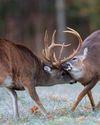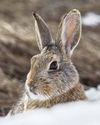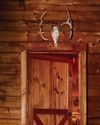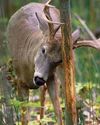If you’ve ever caught a fish on a fly, there’s a good chance the hackle wrapped around the hook came from a Colorado chicken barn where a humble, but brilliant, geneticist creates the most sought-after feathers for fly-tiers around the world

TOM WHITING noticed a pattern. It was the early 1990s, and fly-tiers from around the world were asking Whiting, a poultry geneticist, for a very specific feather. It had to be long, wide, fat-barbed, and without webbing or a frayed end— something more akin to a squirrel tail than a typical bird feather. The earliest British books on fishing mention such a feather, reportedly plucked from the neck of the Spey cock, an almost mythical rooster bred on the banks of Scotland’s River Spey and deeply connected to flyfishing’s 19th-century start. This chicken supposedly grew feathers that produced seamless, natural movements underwater and made for a fly no salmon could resist.
For years, Whiting was fixated on finding this feather— writing letters to breeders and poring through books—yet he kept coming up blank. “Nothing convinced me that a distinct breed ever existed,” he says. “I found one idealized breed painting, and it looked like a Coq de Leon to me,” referring to a breed of Spanish chicken. But he just couldn’t leave it alone—so he took the matter into his own hands. “Even if this rooster doesn’t exist,” he decided, “I can build it.”
Chickens, Whiting likes to say, are “genetically plastic.” Through selective breeding, a 4-pound barnyard hen, for example, can produce 8-pound great-great-grand-hens with wildly long feathers in an array of colors and textures. The normal taper of a feather—that elegant arc of, say, Shakespeare’s quill—can be altered to a pencil-like thinness or to as wide as an ax blade.
This story is from the December 2017 - January 2018 edition of Field & Stream.
Start your 7-day Magzter GOLD free trial to access thousands of curated premium stories, and 9,000+ magazines and newspapers.
Already a subscriber ? Sign In
This story is from the December 2017 - January 2018 edition of Field & Stream.
Start your 7-day Magzter GOLD free trial to access thousands of curated premium stories, and 9,000+ magazines and newspapers.
Already a subscriber? Sign In
LIVING THE DREAM
After the author arrives in Maine’s fabled North Woods with a moose tag in his pocket, an adventure he’s been wanting to take his entire hunting life, reality sets in, and he learns a valuable lesson: Be careful what you wish for
Get the Drift
How to make an accurate windage call under pressure

First Sit
An icebreaker outing in a pristine spot produces the rut hunt of a lifetime
A Local Haunt
The author finds a sense of place in an overlooked creek, close to home

A Hop and a Pump
Jump-shooting rabbits with classic upland guns is about as good a time as you can have in the outdoors

Welcome TO camp
Is there any place better than a good hunting camp? It has everything: great food, games and pranks, and of course, hunting. Shoot, we don’t even mind going to camp for grueling work days in the summer. Here, our contributors share their favorite stories, traditions, and lessons learned from camps they’ve shared. So come on in and join us. The door’s open.
THE DEERSLAYERS
Before you even claim a bunk, you need to eyeball the hardware your buddies have brought. In the process, you’ll see that the guns at deer camp are changing. What was walnut and blued steel may now be Kevlar and carbon fiber. The 10 rifles featured here aren’t your father’s deer guns. They’re today’s new camp classics
THE JOURNEY TO PIKE'S PEAK
Last summer, the author and three friends ventured off the grid to a remote fish camp in Canada. They hoped for great fishing, but what they experienced was truly something else

Stage Directions
When early-season whitetails vanish from open feeding areas, follow this woods-edge ambush plan
Rookie Season
A pup’s first year, from preseason training to fall’s big show